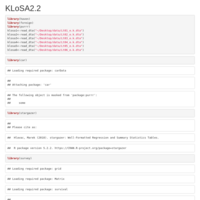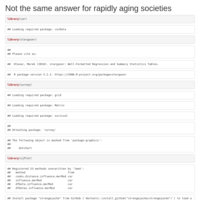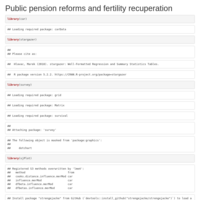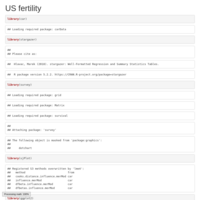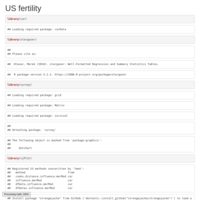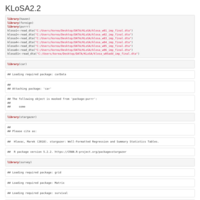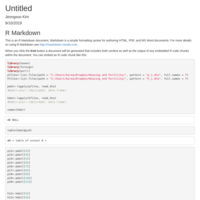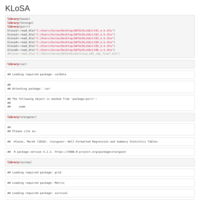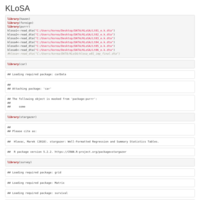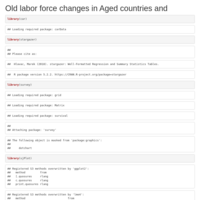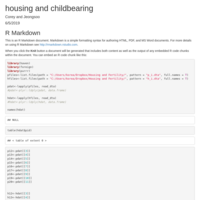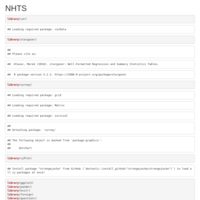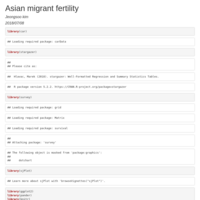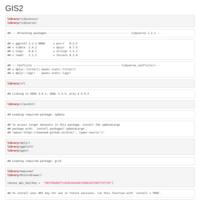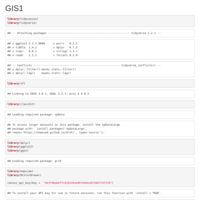Recently Published

Document
interval changed to years between the age of 20 and marriage age

surv_function for marriage
housing and marriage by gender
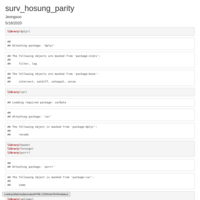
Cph and Surv
having children by household level
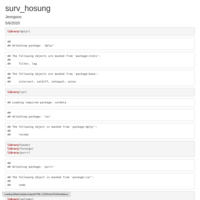
Housing and fertility in Korea
Cox proportional hazard model and survival functionj analysis
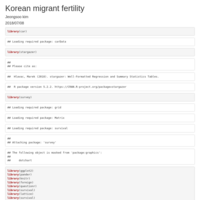
ASFR
US first-generation Korean Migrant ASFR
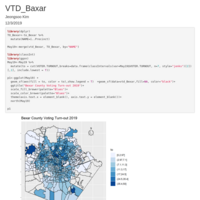
Prescinct districts in Bexar County
Turn out rates in general election of May 2019

Policy impact on TFR
Five countries those show a recuperation successfuly.

Test without imputation
without imputation
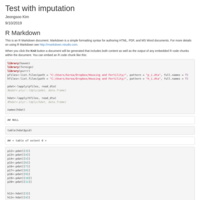
Document
homeownership and parity of birth

Publish Document
without imputation

Publish Document
with imputatoin
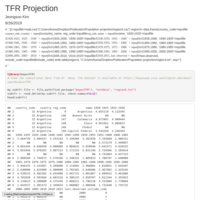
Document
TFR Probabilistic Projection
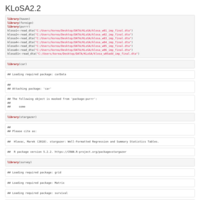
Dissertation chapter 2.3
Dissertation Chapter2.3
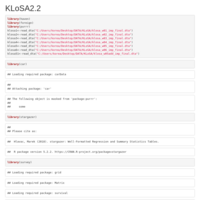
Publish Document
Chapter 2.3

Document
Chapter 2.2 Cox proportional hazard model
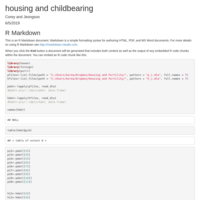
Document
a draft of Cox hazard model

Document
new test by pace
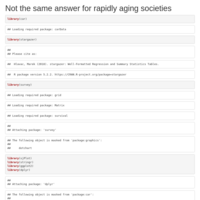
Chapter 1 for dissertation
Not the same answers for rapidly aging societies

Document
NHTS data
distance of home-work by states and MSAs level
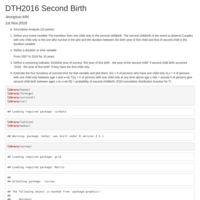
Document
KLIPS 2016 19th wave
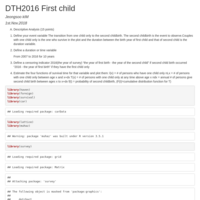
Document
KLIPS 2016 19th wave
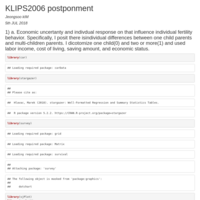
Residential determinants in Korea by using KLIPS 2006
a decade ago in Korea

Residential determinants in Korea by using KLIPS
for APA conference

Document
US fertility slope analysis
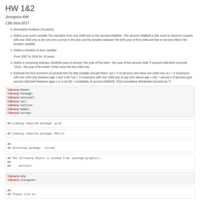
Document
Second birth with Cox and discrete hazard model
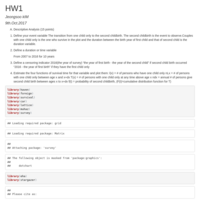
The suvival perspective of the relationship between second child and financial determinants
Recent cohorts in South Korea have shown different family formation trends, characterized by delaying marriage and childbearing, since the 1997 economic crisis. This paper analyzes the financial status determinants of parity-specific fertility. The purpose of this paper is to find how young generations’ financial behaviors are correlated with fertility behaviors. This paper uses AFT(Accelerated Failure Time) model to predict financial determinants of higher parity. Specifically, this paper focuses on which financial characteristics are significantly related to the second child-birth. Given that lifetime financial resources are limited, young Koreans allocate the resources selectively among the lifetime choices: fertility, housing, and retirement. The housing burden is one of the most serious concerns in marriages and childbearing.
